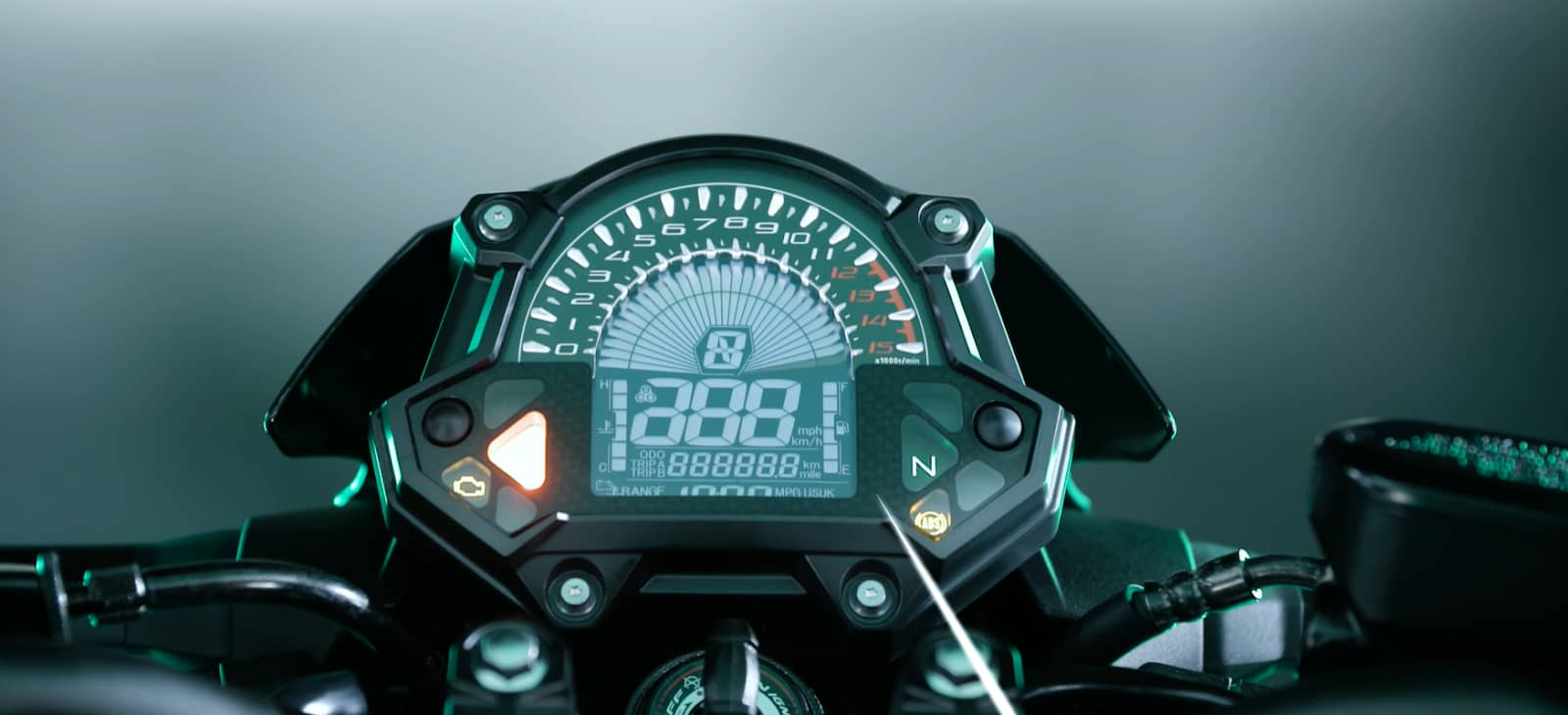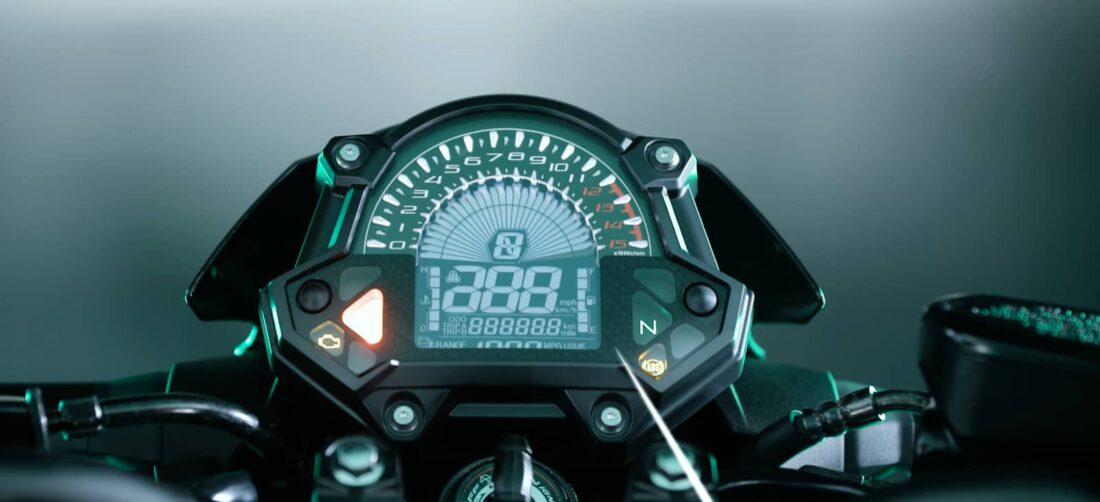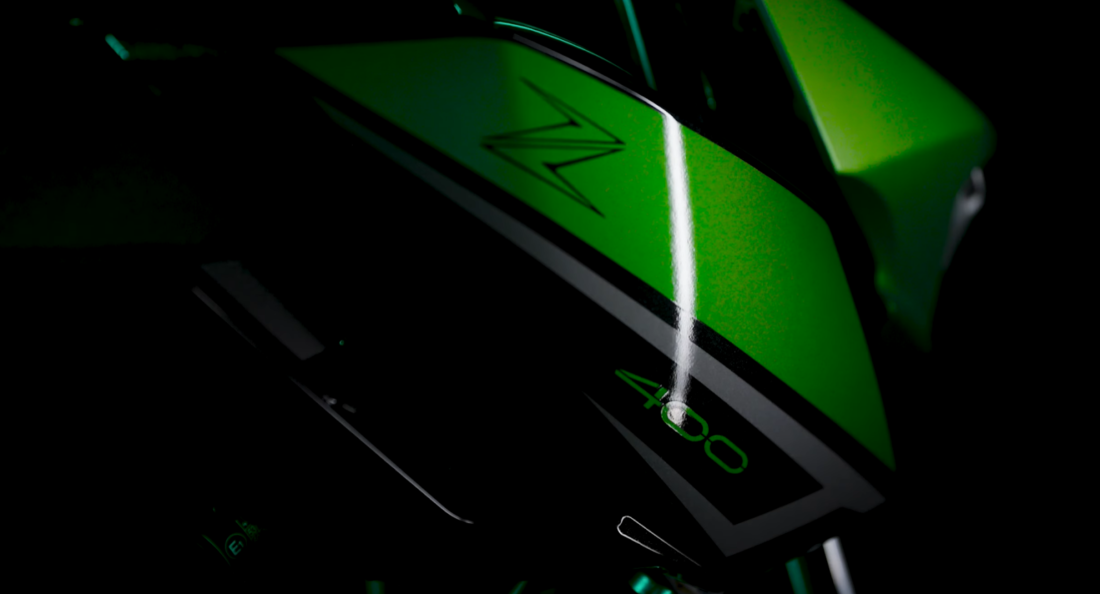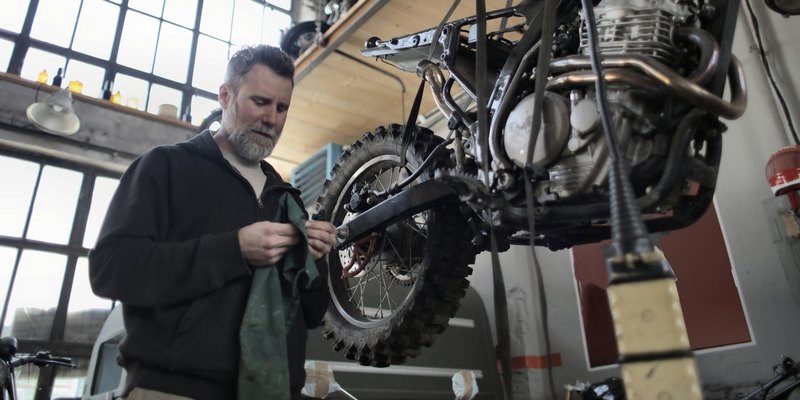Exploring the Kawasaki Z400 Top Speed

In a swift 4.34 seconds, the Kawasaki Z400 dashes from 0 to 60 mph, marking its territory among the lineup of Naked variants emerging from fully faired counterparts. Serving as the unclothed rendition of the formidable Ninja 400, the Z400 stands firm amidst its competitors, including the KTM 390 Duke, Honda CB500, and Yamaha MT-03, alongside its kin, the Kawasaki Z250 and Z300.
Bearing the identical chassis and wheels as its Ninja 400 counterpart, the Z400 is propelled by the same robust 399 cc parallel twin engine, boasting an impressive claimed 48 horsepower at 11,000 rpm. Designed with the new rider in mind, this rorty naked machine offers a blend of spirited performance and practicality for the street, presenting an enticing option for those seeking an affordable yet high-performance learner motorcycle within the fiercely competitive market.
While the Kawasaki Z400 boasts impressive performance, it pales in comparison to the breathtaking speeds achieved by the legendary Kawasaki Ninja H2R in a recent article detailing its top speed.
Kawasaki Z400: Dyno & Engine Performance
The Kawasaki Z400 stands as a pinnacle of engineering within its class, mirroring the exceptional performance of its sibling, the Kawasaki Ninja 400. This motorcycle exemplifies what it means to deliver a potent performance in compact engine size, excelling particularly in the sub-400cc category.
- Boasting an identical 399cc parallel twin-cylinder engine to that of the Kawasaki Ninja 400, the Z400 maintains its prowess without the common practice of detuning often seen in naked motorcycles that share their engines with more sport-oriented, fully-faired counterparts;
- Despite possessing the same powerhouse as the Kawasaki Ninja 400, the Z400’s performance on the dyno slightly trails, registering at 43 horsepower at 11,000 rpm. Similarly, its torque output is marginally reduced, producing 25 ft/lb at 7,500 rpm. Nevertheless, these figures remain commendable and suggest minimal differences, likely attributable to model variations and testing conditions on the specific day of measurement;
- It is worth noting that Kawasaki Ninja 400 was equipped with an aftermarket exhaust, providing it with a slight advantage. Despite these minor discrepancies, the engine’s power delivery is expansive, with a noticeable surge in performance beyond 7,000 rpm, highlighting its capacity to excel across a wide range of speeds.
Kawasaki Z400: Power & Acceleration Analysis

Similar to the Kawasaki Ninja 400, the Z400 exhibits a power plateau from about 9500 rpm, extending to 12500 rpm. This characteristic is particularly advantageous on winding country roads and race tracks, allowing for extended gear engagement compared to its rivals.
The Z400 demonstrates impressive torque from as low as 4000 rpm, maintaining this strong response up to and beyond 12500 rpm. While performance under 4000 rpm could see improvement, the engine’s displacement and gearing seldom necessitate operating in this lower range. Typically, usage in first and second gears, especially in slow traffic, provides ample acceleration.
In higher gears, the Kawasaki Z400 shines when operated above 4000 rpm, maintaining or surpassing the pace of companions thanks to its responsive nature to higher revs. Beyond 7000 rpm, the Z400 outperforms many competitors with its acceleration and responsiveness.
- The performance of the Kawasaki Ninja 400 has set high expectations with its class-leading acceleration times among sub-500 cc motorcycles, surpassing even the larger Honda CBR500R. The Z400, while slightly trailing the Ninja, still impresses with its acceleration capabilities. Achieving 0-60 mph in just 4.34 seconds and 0-100 km/h in 4.57 seconds, it underscores the remarkable potential of entry-level motorcycles;
- Comparatively, the Z400 closely follows the Ninja 400 but excels against the Honda CBR500R and Yamaha YZF-R3, though it slightly lags behind the KTM 390 Duke. Its quarter-mile performance is noteworthy, recording a time of 13.34 seconds at a terminal speed of 98 mph, showcasing its competitive edge in this metric.
The Z400’s acceleration from 0-100 mph further demonstrates its prowess, marginally trailing the CBR500R but significantly outpacing the KTM 390 Duke. The difference in performance between the Kawasaki Z400 and Ninja 400, particularly beyond 60 mph, can largely be attributed to the Z400’s naked design compared to the aerodynamically faired Ninja 400.
Achieving optimal launch times on these less powerful motorcycles often involves a delicate balance between clutch engagement and throttle application, a technique that proved effective with the Z400.
The Kawasaki Z400 allows for flexible gear shifts within the 11000 to 12000 rpm range, facilitated by its broad peak horsepower spread. As a naked motorcycle, aerodynamics play a crucial role in performance, with efficient rider positioning making a significant difference in acceleration times and top speed.
This analysis emphasizes the Kawasaki Z400’s dynamic power delivery and acceleration, making it a formidable contender in its class.
Peak Performance of the Kawasaki Z400
In the quest for maximum velocity, it becomes evident that achieving top speed on the Kawasaki Z400 requires a full aerodynamic tuck, particularly as its 40 horsepower struggles against even slight headwinds.
The testing location, though often beset by winds during later hours, offers calm conditions in the early mornings, providing an optimal environment for acceleration and speed trials. These serene mornings proved essential for experiments.
For enthusiasts seeking higher top speeds, the Kawasaki Ninja 400 emerges as a compelling alternative, potentially offering an additional 10 mph over the Z400’s 112 mph. Despite this, the tests with the Ninja 400 yielded a top speed of 116 mph, slightly under the model’s rumored capability of 120 mph. This performance is noteworthy, especially when considering the modest 40-horsepower output of these naked motorcycles, which reliably surpass 100 mph, even under less than ideal conditions.
The top speed was recorded in fifth gear at approximately 11,800 rpm. Experimenting with sixth gear did not yield faster speeds; instead, it resulted in a lower rpm of about 10,600 and a slight decrease in velocity. Consequently, maintaining fifth gear allowed us to achieve the highest speed of the day.
It’s important to note that individual results may vary, and there’s potential for further improvement in the Z400’s top speed, particularly with modifications that optimize power retention at higher rpms. Past experiences suggest that this engine benefits significantly from tuning, especially with adjustments that move the peak horsepower closer to the rpm limit, potentially leading to higher top speeds.
Dynamic Performance: Kawasaki Z400 Mastery in Acceleration

Choosing the Kawasaki Z400 as your steed among the array of motorcycles suitable for novice riders ensures that you won’t just keep pace with your peers; you’ll likely be leading the pack. This bike demonstrates impressive agility and speed, capable of holding its own against more powerful models, such as the Z650, except in extreme high-speed pursuits.
Its robust powertrain is more than adept at navigating the swift currents of highway traffic, ensuring that you’re well-equipped for assertive overtaking maneuvers even beyond 70 mph. Optimal performance in these situations is achieved in fourth gear, though dropping to third can provide that extra surge of speed at the expense of higher RPMs.
The Kawasaki Z400 stands out as an exceptional motorcycle for beginners, offering ample power and performance that exceed the typical demands of learning riders, ensuring a thrilling yet manageable riding experience.
| Speed | Time |
|---|---|
| 0-10 mph | 0.55 |
| 0-20 mph | 1.19 |
| 0-30 mph | 1.81 |
| 0-40 mph | 2.40 |
| 0-50 mph | 3.32 |
| 0-60 mph | 4.34 |
| 0-70 mph | 5.85 |
| 0-80 mph | 7.52 |
| 0-90 mph | 10.28 |
| 0-100 mph | 14.26 |
| 0-110 mph | 26.83 |
| SS/QM | 13.34/98 mph |
| SS/KM | 26.08/109 mph |
| SS/Mile | 38.20/111 mph |
Top Speed: 112 mph
Conclusion
In conclusion, the Z400 is a worthy contender in its class and a solid choice for those seeking a high-performance entry-level motorcycle. Its ability to keep pace with larger, faster motorcycles and swiftly navigate fast-moving highway traffic make it a top contender. It delivers remarkable acceleration and speed, making it a competitively powerful and practical choice for beginner riders.
